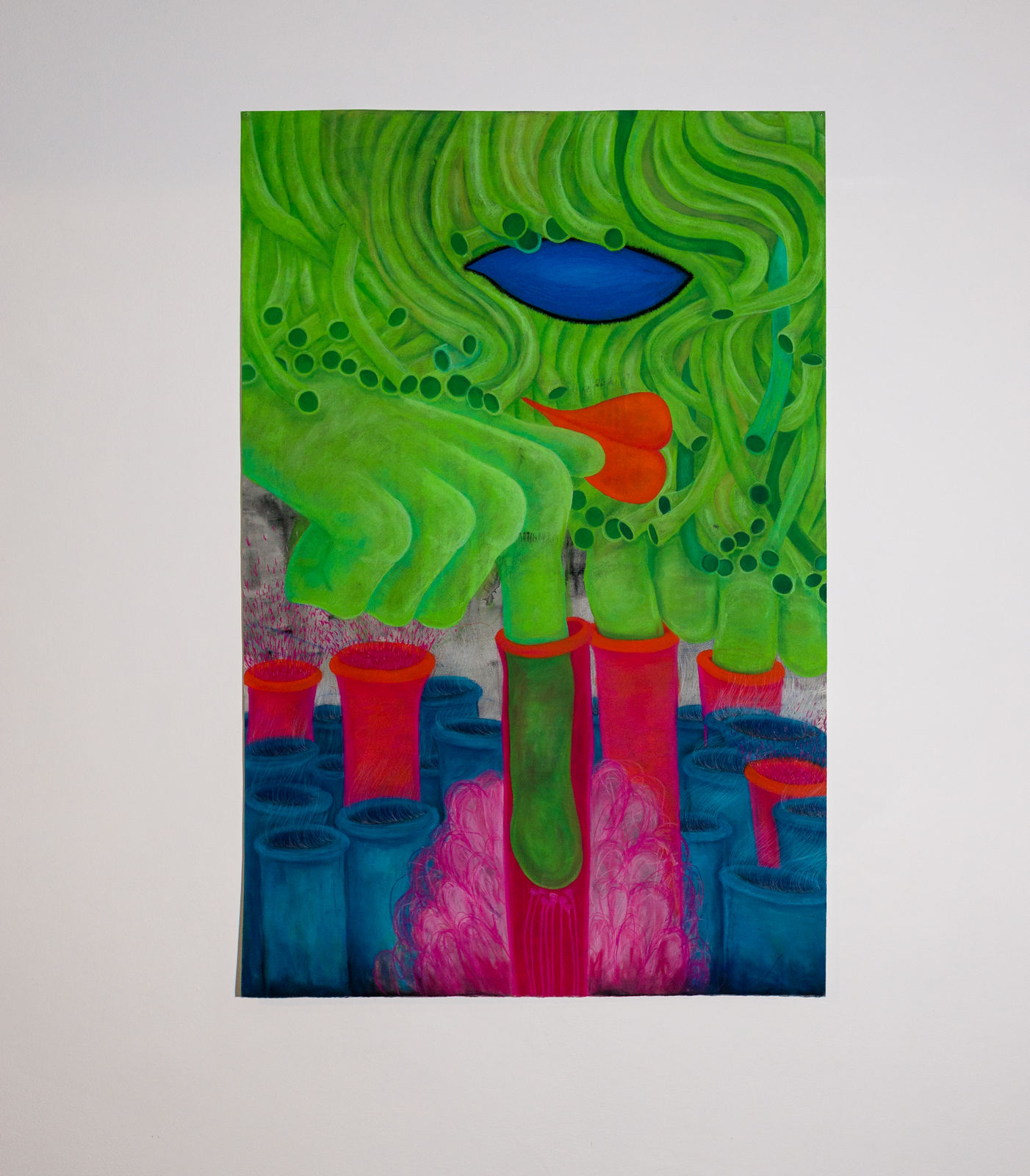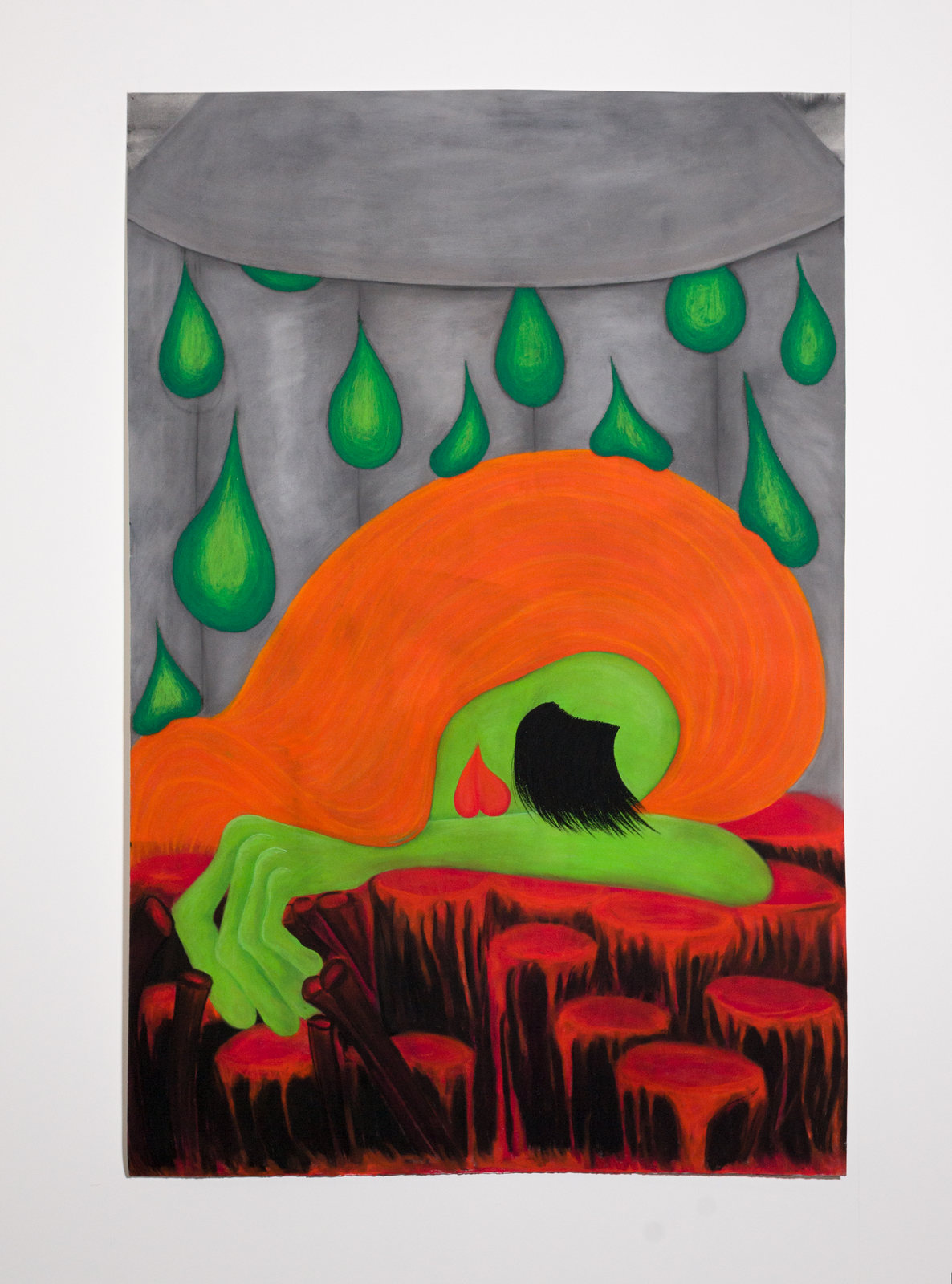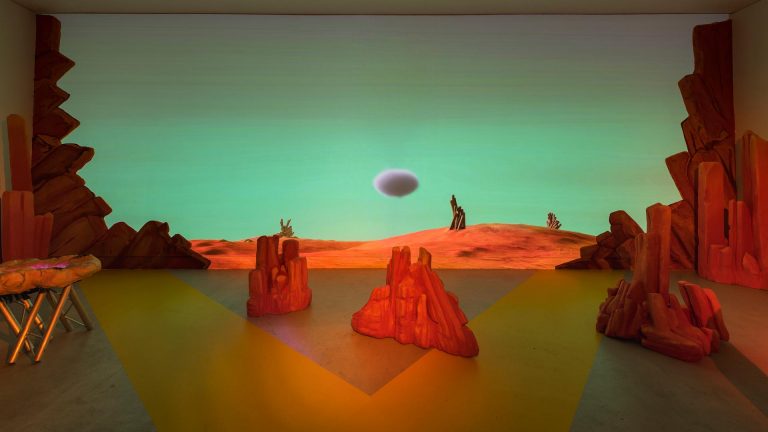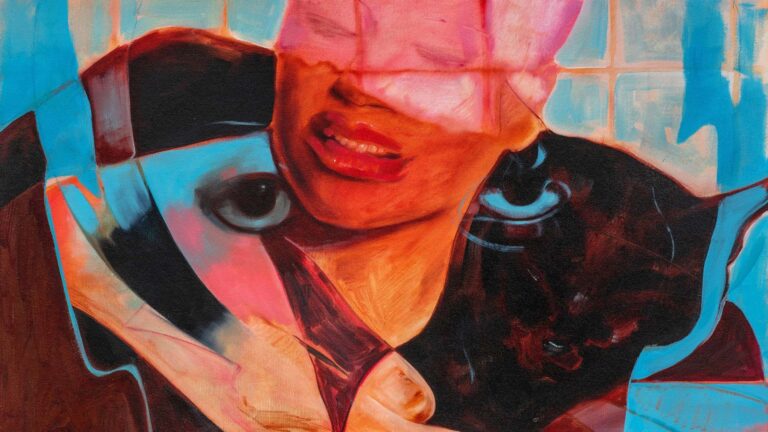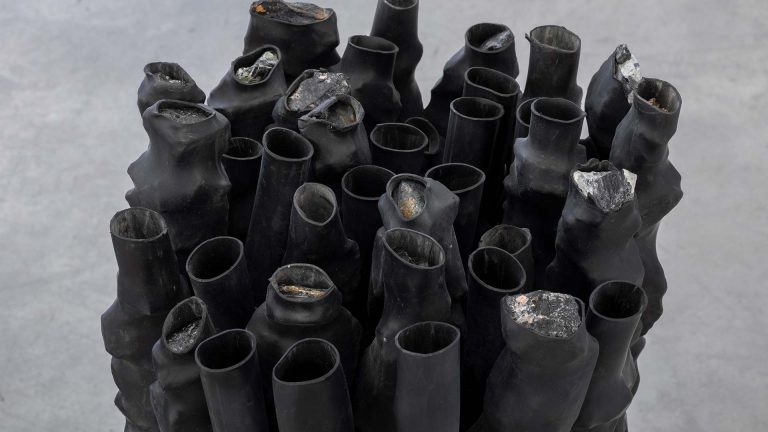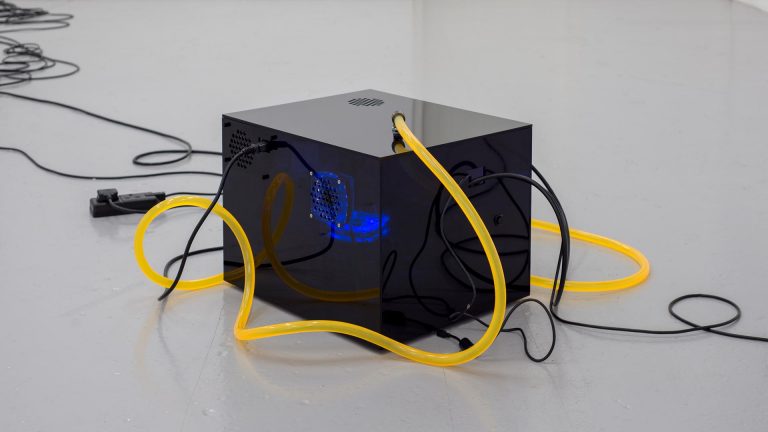Artist: Rebecca Ackroyd
Exhibition title: House Fire
Venue: OUTPOST, Norwich, UK
Date: March 24 – April 16, 2017
Photography: all images copyright and courtesy of the artist and OUTPOST, Norwich
Note: Press release can be found here. Floor plan can be found here
A conversation between Nell Croose Myhill and Rebecca Ackroyd, Outpost Gallery, 20th March 2017
Nell Croose Myhill: I attended a talk where you spoke about wanting to approach making work with the attitude you had as a teenager, with freedom and honesty, and risk. How did you approach this new body of work?
Rebecca Ackroyd: Well, since the talk in June, I didn’t make any work for a few months afterwards. I really wanted to think about what I wanted my work to be doing, and what the impetus behind it is, I feel as though a lot of anger and frustration and despair from well, I guess since June.
The works in the show have a much more direct reference to my personal history and where I come from. There’s a piece that’s a bit like my parents house, so it has these inlets for windows, which is where we used to sit and smoke when we were teenagers, all the sculptures felt like they were things I needed to make. Like the Ironside – which is the stuffed toy version of my Mum’s maiden name – I just really need to make that, and have it. And none of it was really about making sculpture, it was just to make these objects.
NCM: And what happens when they become objects?
RA: I think I just wanted to turn these memories into substance. But they are still very small and vulnerable. Everything about this show feels quite exposed, or quite exposing. For me, it feels a lot more nervous than anything else I’ve done. Like the work feels nervous, and I feel nervous!
NCM: Wow, ok, because to me it doesn’t seem tentative.
RA: I wanted to have a few certainties, like the carpet. I always knew there would be a carpet. I really like the inherent masculinity in pub culture. I’ve worked in pubs a lot and I was thinking about how they become a haven for people to go to drink, and to escape their home life. Or can be. The carpet is titled ‘the wife’. I wanted it to be like a landscape or a world for the objects to emerge out of, like the pieces are inhabiting a reality.
NCM: Can we talk about how you name your work – the carpet is called the wife – giving them characteristics or personifying them somehow?
RA: The large print with the furry hands is called ‘We have your children’. I saw it at a Women’s March, as part of a bigger placard. I wanted the image to consider the fear of the other, or the unknown. Its something I’ve been thinking about a lot as a woman. Having young nieces, I’ve heard them say already “I cant do that I’m a girl”, at the age of 5, because they’ve heard someone else say it, and it infuriates me that we grow up with this sense of “knowing your place”. I think with the recent election of Trump and having listened to that disgusting recording of him talking about grabbing women “by the pussy” I thought a lot about how this kind of language normalises the undermining and objectification of women. And the feeling of not being able to do things. This is something I’ve been thinking a lot about whilst making the work. Which is why I made the Ironside, and why there is a Fairy Tower made out of metal. All the sculptures are almost like images of, or it felt like making a memory of something, rather than a replica of anything. It’s an image of a thought.
NCM: The gallery has been transformed into an uncanny space, both unsettling and familiar. You cited JG Ballard’s The Enormous Space as an influence of this exhibition, could you talk a little bit about that?
RA: I realised that a lot of the literature I read is about sudden shifts in reality. Even books that are biographical / non-fiction, I read one about Afghanistan recently, and I’m reading a book about Pompeii, this impending instability which I think really resonates with how I feel at the moment, in general. And, I think that’s something that I have become increasingly interested in. These moments that you walk into and you don’t know what you are walking into, these elements that have familiarity, like the pub carpet, and then there are moments of imagined drawings that I almost see as windows out of the space, into something much more psychological.
NCM: It seems to me that the industrial and/or domestic space can function as a psychological space, or dreamscape, even. The idea that these are windows onto this psychological space, how does the idea of a dreamscape relate to these drawings?
RA: I think they do relate to that, I haven’t really wanted to talk in those terms because its such a cliché when you talk about your work being a dream, but dreams actually have been a really prominent part of my, or are a really prominent part of my life and ever since I could talk I’ve remembered them. I have memories that I think are memories, but were definitely a dream.
The drawings emerge out of something that is really immediate, and that isn’t planned. And that is what I really enjoy how they open up space that isn’t definable by material or practicality. They can have a narrative and I see them almost as an escape, I really enjoy where they can lead in a way that is very different to when I’m making objects, there’s a bit of that when I’m making sculpture, but quite often its about figuring out how something goes together, getting frustrated because I’m not very good at making it.
NCM: But there’s a compulsion with the drawings?
RA: Yeah. When you asked me to do the show, I hadn’t shown for a while, and I had just been in the studio and I had just started making these drawings and I didn’t stop, and instead of stopping and thinking, ‘right I’m going to make some proper artworks now’, I decided to carry on making them, and make this show about how they can come into the practice, and not just be works on paper, they have as much importance as everything else in the show, and I don’t see them as just works on paper,
NCM: They’re not preparatory…
RA: They are definitely not preparatory, and my drawings never have been preparatory, because my preparatory drawings are just a sketch. Whereas, these are very much like, they’re almost the world where the sculptures can exist or they build something in which to make the practice exist, and I think that that’s become really important in my work.
NCM: There seems to be a recurrent theme of fire in your work, both in this show – working with wax, the flame red of the hair in the drawings, the chimneys, and previous shows (I’m reminded of a previous show ‘Taken Care’ which included a number of large scale figurative sculptures with coal in the hearths of their stomachs…). How did you arrive at the title for this show, House Fire?
RA: It’s something that’s really recurrent in my work, the feeling of heat. I work with wax because I love the transformative quality of it, and being able to melt parts of an object. A lot of my work is about this kind of destruction and burning. I am just thinking back to a sculpture I made ages ago, which was a graphite cast of a radiator, which was deadening hot object. I don’t know where it’s come from, when I was a kid I was terrified of fire, I used to pack a bag every night to take out with me if there was a fire.
NCM: that sounds like the sort of thing I would have done!
[Laughs]
RA: When I started making this show, I was thinking about going to different buildings with my dad, any where we were staying, hotels, rented houses, and every time we got somewhere he would disappear and he would be working out our escape route in case there was a fire.
NCM: Because of your anxiety?
RA: No! I think it was his anxiety! But I think I was really fascinated with fire, and with people whose house had burnt down. One of my best friend’s lived opposite a massive house that had burnt down and we used to sit at her window at night and look at it and tell stories.
NCM: When it was a burnt out shell?
RA: Yeah. For me, in a way, that ties in with the literary references of these switches in reality
NCM: and the transformed?
RA: Yeah, and a sense of loss, or losing something that you had. Which can be quite liberating. But it’s also about the instability, the existence between.
NCM: Can we talk about the different elements of the exhibition- the sculptures and the drawings in the space, and the print on the wall as you enter the gallery. How do they relate to each other?
RA: I thought about not including that print, but it felt like it was a really important piece in the build up to this body of work, because I made that before all of these works, and it has a really different register to everything else in the show. I liked the idea of coming into the show and being confronted by this image which is really direct and quite aggressive, but its also of me, so its quite personal and feels quite exposing in that way.
NCM: But it’s a very powerful image, especially considering its scale, and that’s quite striking in comparison to the works within the space, which are quite small…
RA: As the work developed for this show, it felt really appropriate to make these small pieces which are quite vulnerable, and in my head, when I kept thinking about what to include, and what not to include (there are two bigger pieces which haven’t been included) I kept imagining seeing the show sitting on the floor, and being in this sprawling landscape where everything is on the same level, or register.
NCM: It’s nice that we are sitting on the floor now.

